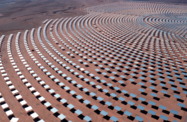 Speaking about commitment to energy-saving initiatives
Speaking about commitment to energy-saving initiatives
What is the current level of awareness in Morocco regarding energy efficiency?
SAID MOULINE: The energy transition is an unwavering Moroccan commitment, notably thanks to objectives set by the kingdom’s higher authorities in 2009, and renewed during the UN Climate Change Conference, held in Marrakech in 2016. These pledges allow for synergies between public entities and the private sector, the latter of which remains the best-positioned actor to invest in renewable energy and energy-efficient solutions.
Today, the awareness level among Moroccan companies is significant. Major sectors, such as transport, industry and construction, currently employ energy-saving initiatives in their development plans, and have set up simple solutions such as solar roofs or greener mobility. Every new project takes energy efficiency into consideration. This trend is driven by large businesses such as OCP Group, and is made possible through innovative means of financing. A bulk of Morocco’s major banks initiate the financing of green projects, and many subsidies exist to incentivise private actors. A good example is the local bank Crédit Agricole, which contributes to reducing the energy bills and carbon footprints of both big and small farmers by financing innovative solutions, such as heat pumps for irrigation.
Scientific progress has made the production of renewable energy more affordable, while the increase in global capacity also lowers costs. The government aims to raise its energy efficiency by 20% by 2030; but with energy consumption increasing 8% each year, this is a significant challenge. Nonetheless, a new energy paradigm is being established worldwide, and Morocco is fully committed to it.
How can the uptake of energy-efficient initiatives be accelerated in Morocco and Africa as a whole?
MOULINE: Both public and private economic actors have a part to play in raising the population’s awareness. Mass campaigns on eco-driving or green behaviour can make a significant difference. Hosting professional-specific training is another approach, such as teaching architects and project owners about green building or construction contractors about energy-saving habits. AMEE, for example, set up a thermic regulation framework for the real estate sector, which is slowly but firmly exerting pressure on stakeholders to upgrade their standards, with the state leading the way.
Another key element is water resource management, which is paramount in Morocco. In Marrakech, for instance, several golf courses participated in financing the creation of an environmentally friendly water pump and are now being irrigated with treated waters. To reach as many people as possible on an individual level, we launched the “green mosques plan”, which aims to enhance the energy efficiency of religious buildings across the country, and also serves as a communication channel to raise awareness about ecological behaviours. On a regulatory level, further efforts can be made. The state could stop subsidising butane gas, for example, and promote a greener solution.
In a continental context, Morocco follows the logic of exchange and cooperation with the rest of Africa towards energy efficiency and sustainable development. With 600 million people that still have no access to electricity in the continent, the gap to fill is significant. However, thanks to technology, considerable leaps can be made regarding energy production and efficiency; however, this must go hand-in-hand with continuous training and awareness-raising actions. Setting up regional training centres, to share energy efficiency tips and ideas on renewables that take both production and consumption aspects into consideration, could be beneficial.
African countries could also benefit from changing their approach to public-private partnerships. With the right governance framework and transparency measures, they can be very efficient and promote the transfer of technologies. What was achieved by the Moroccan Agency for Solar Energy is a significant success story: one-third of the investment in the Noor solar plants was spent in the national ecosystem, and giants such as Siemens even built a factory in Tangiers to produce wind blades locally.

 Speaking about commitment to energy-saving initiatives
Speaking about commitment to energy-saving initiatives 